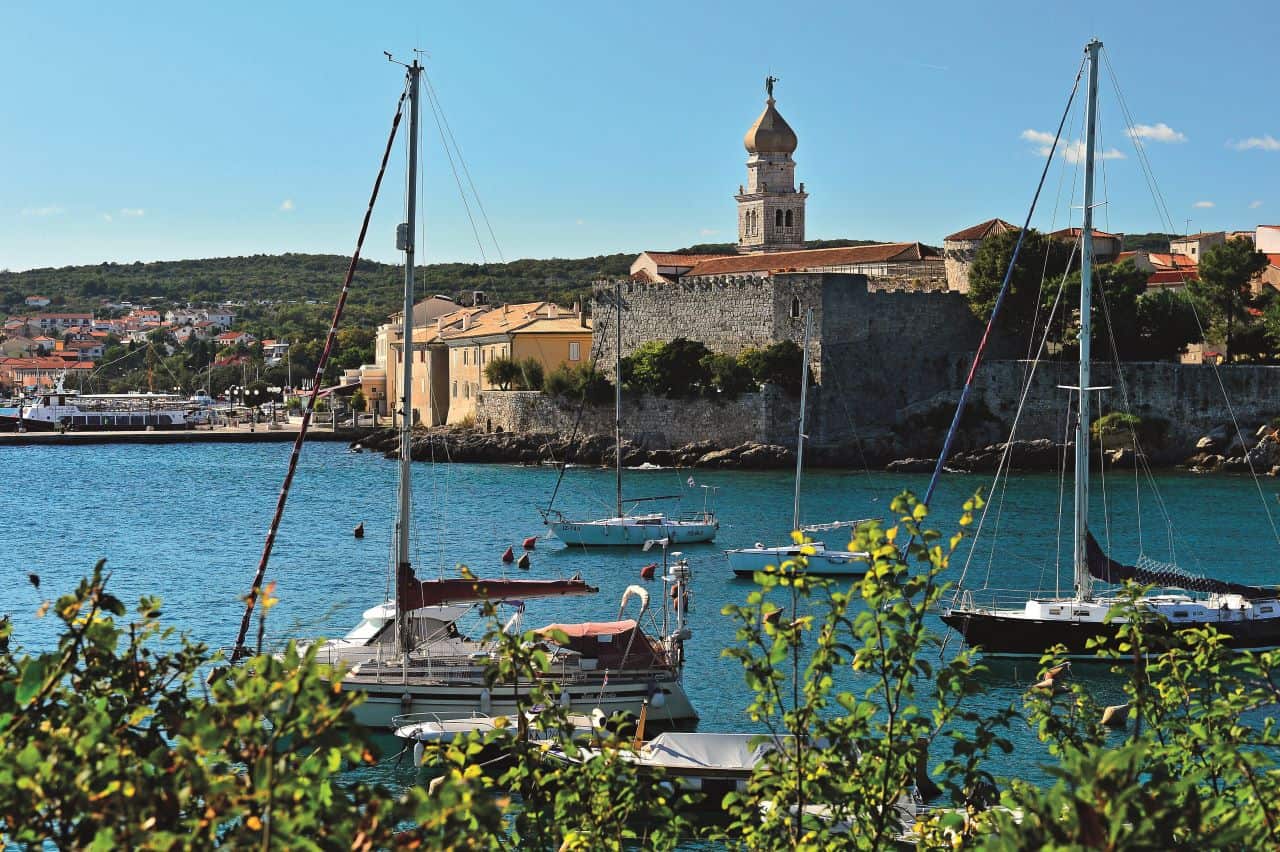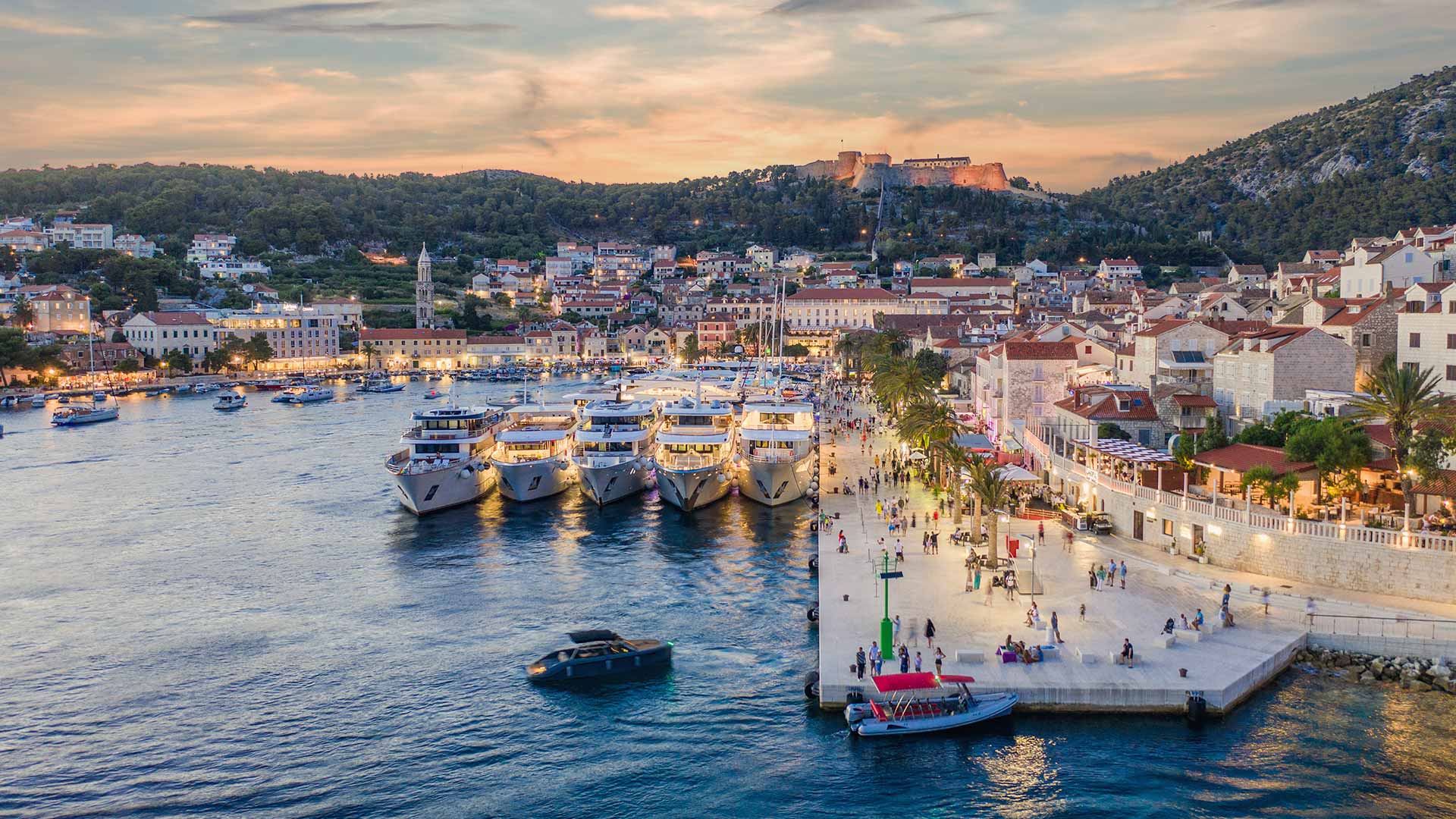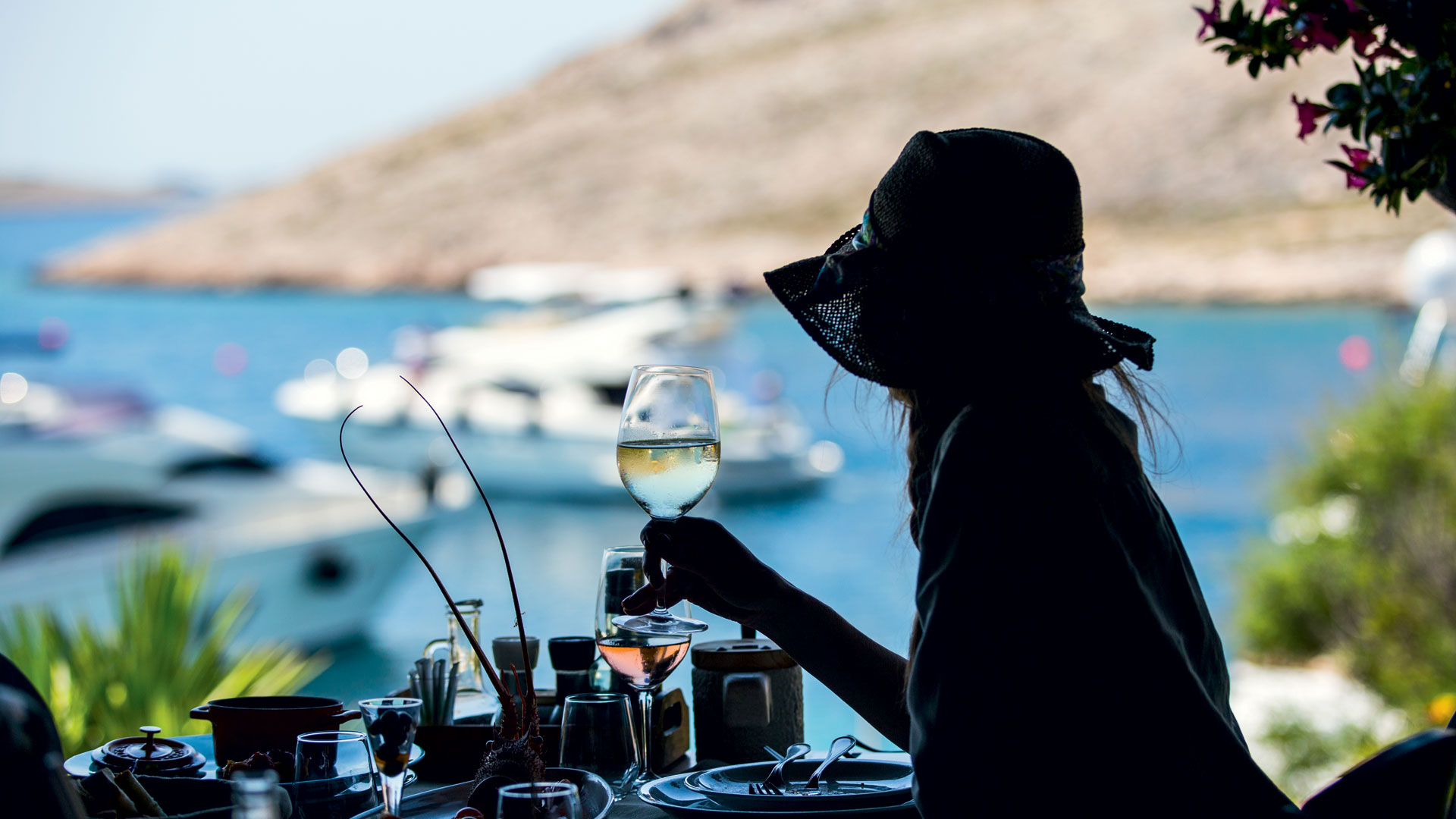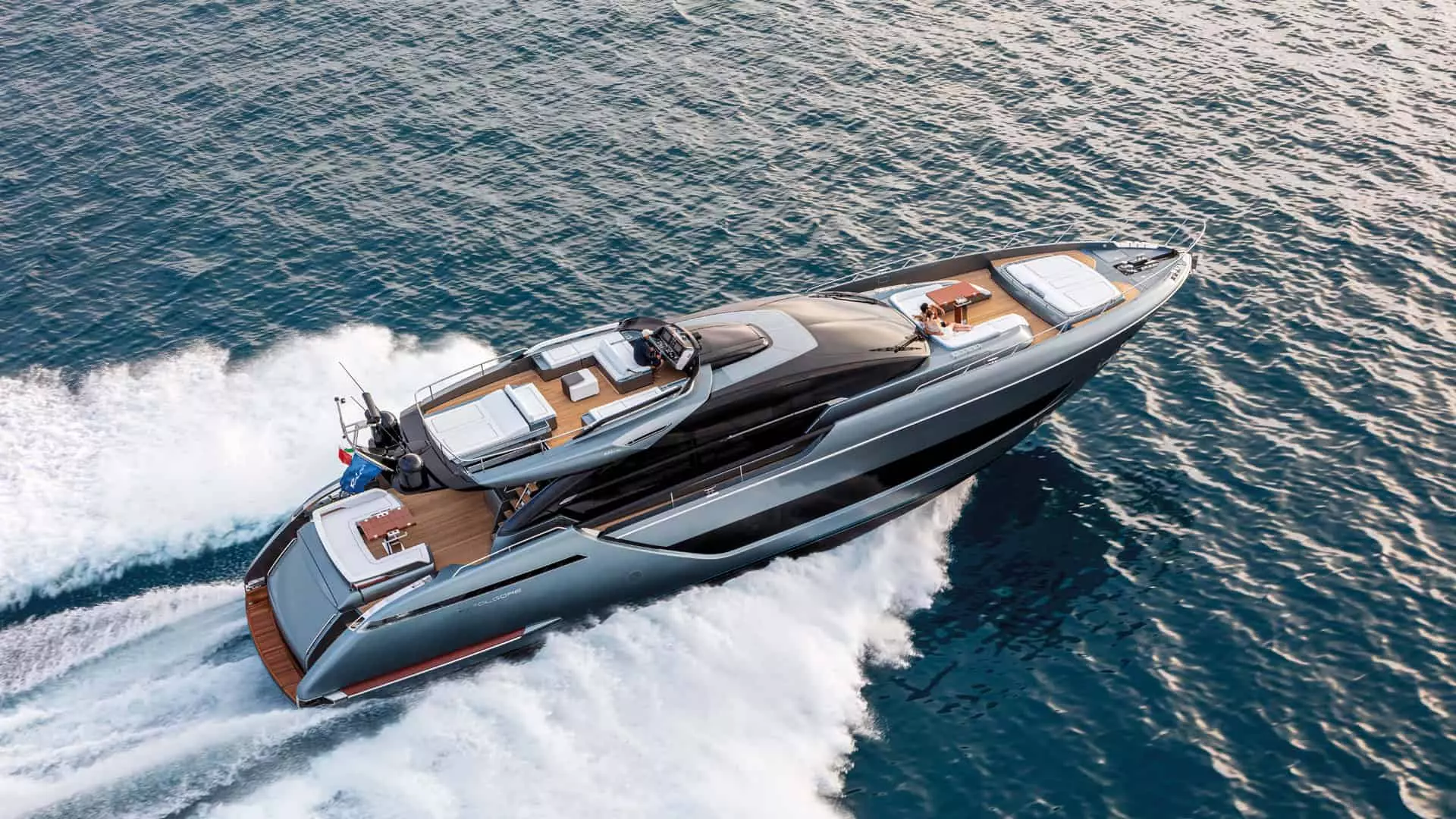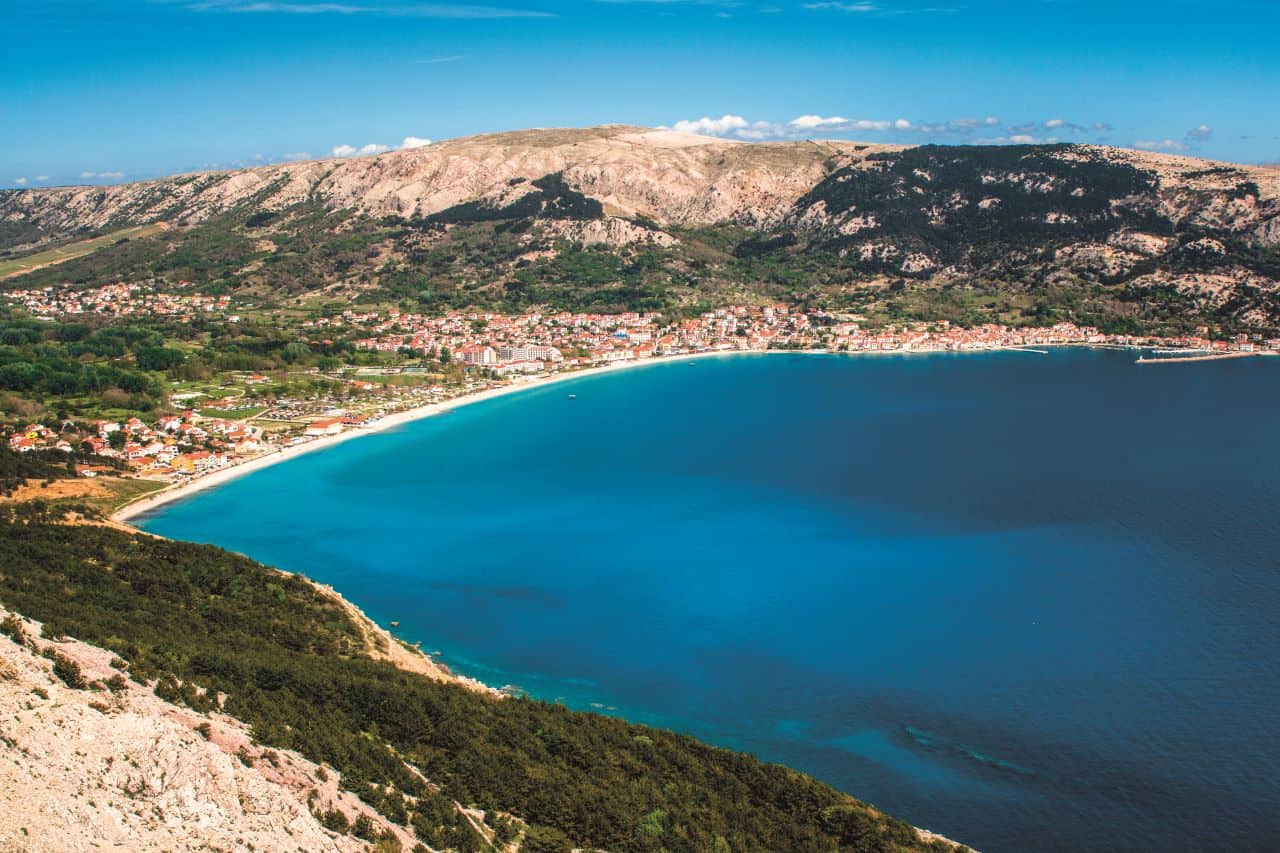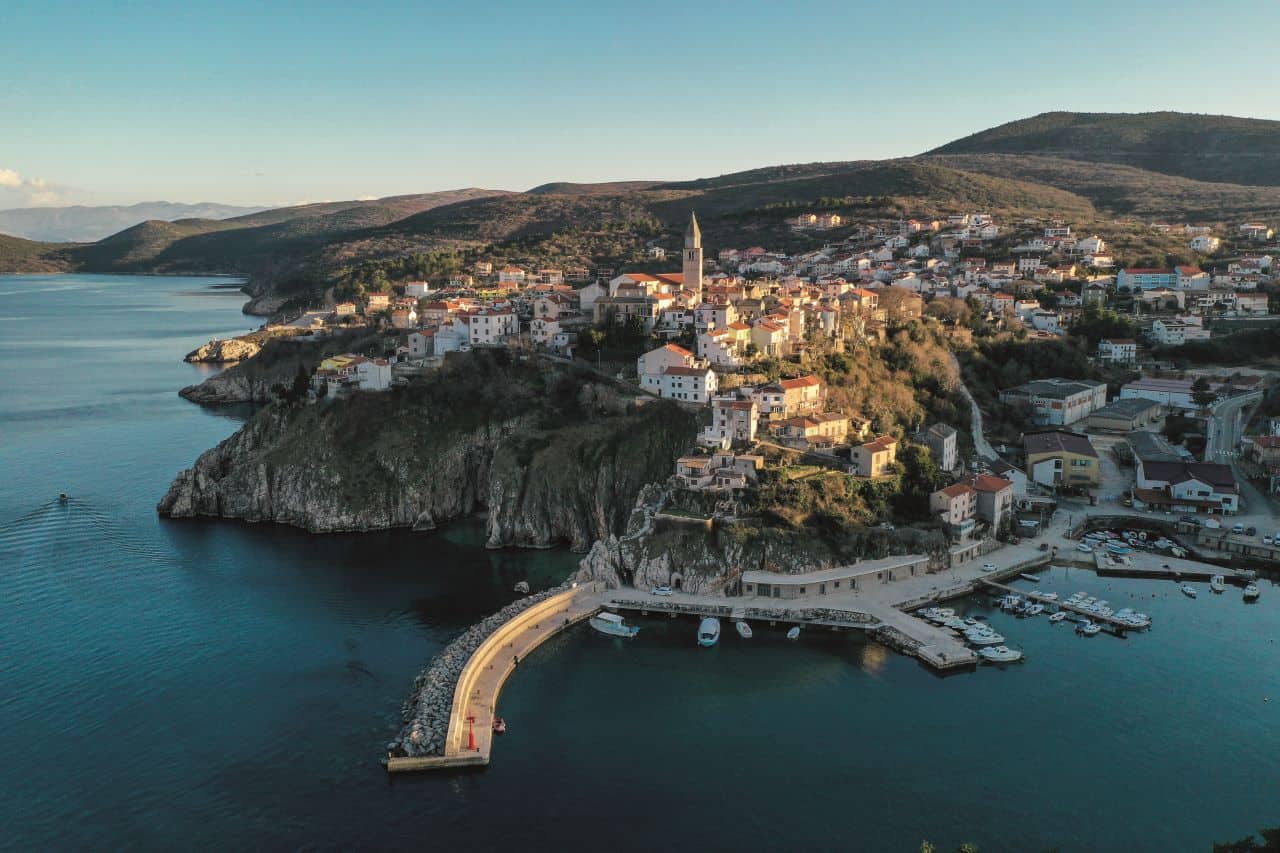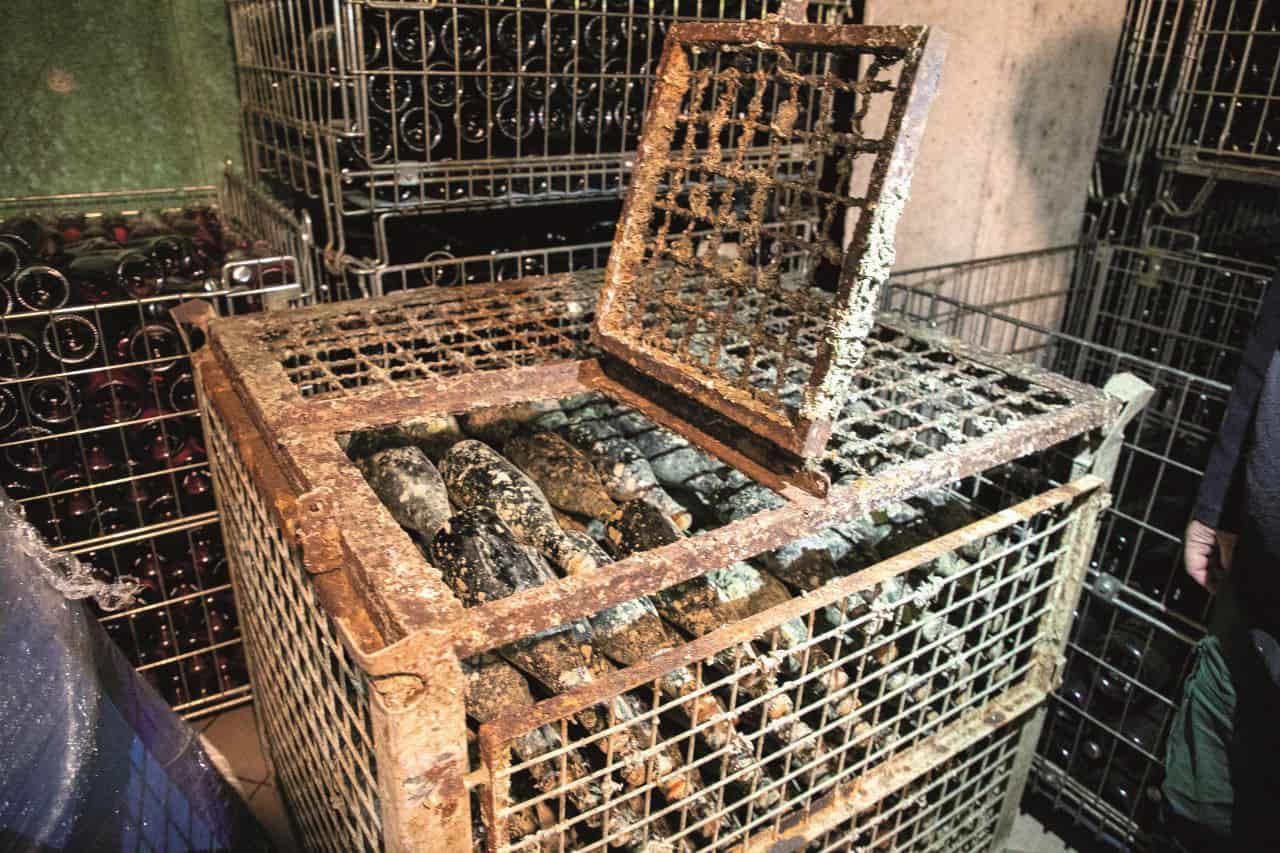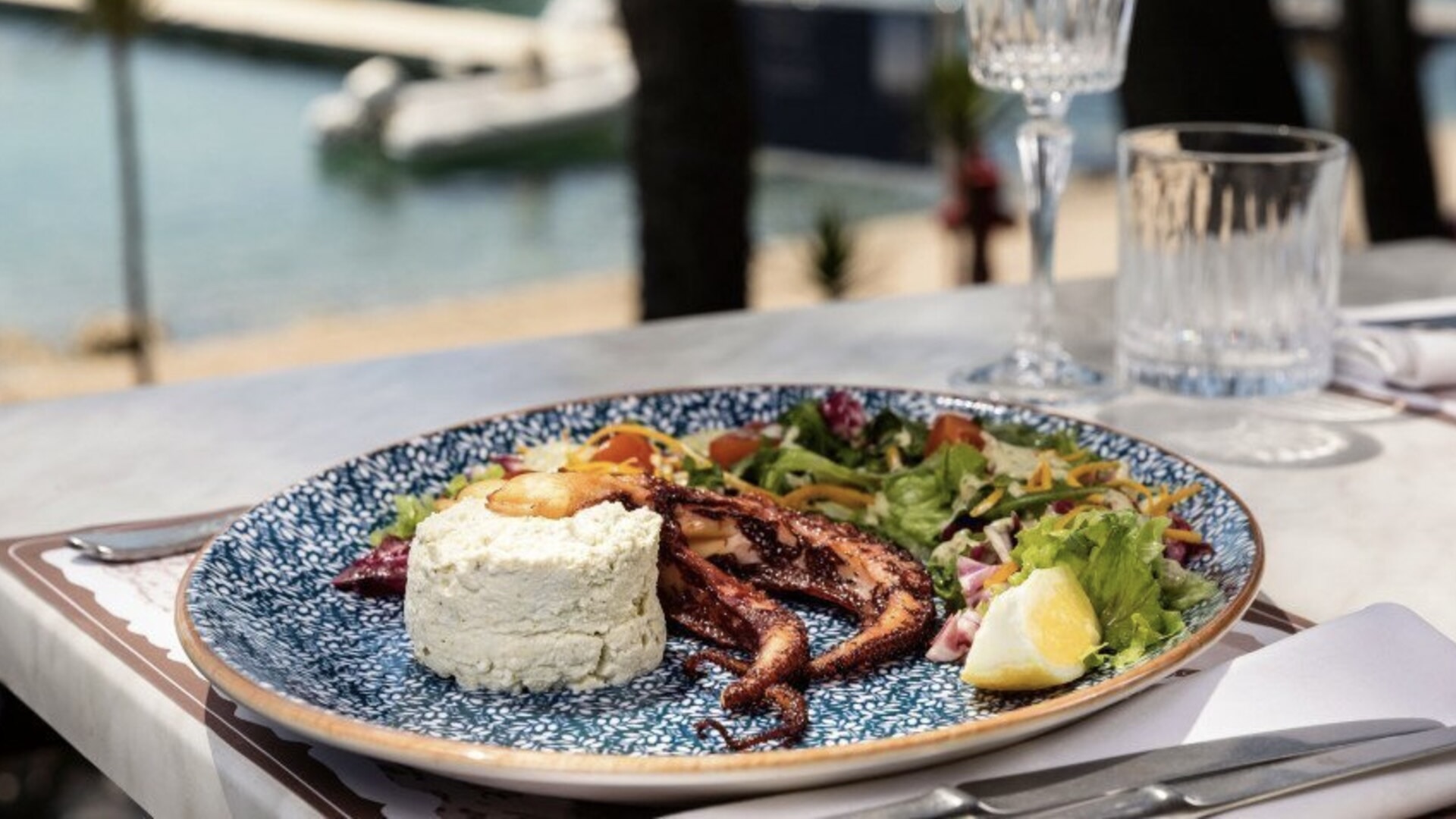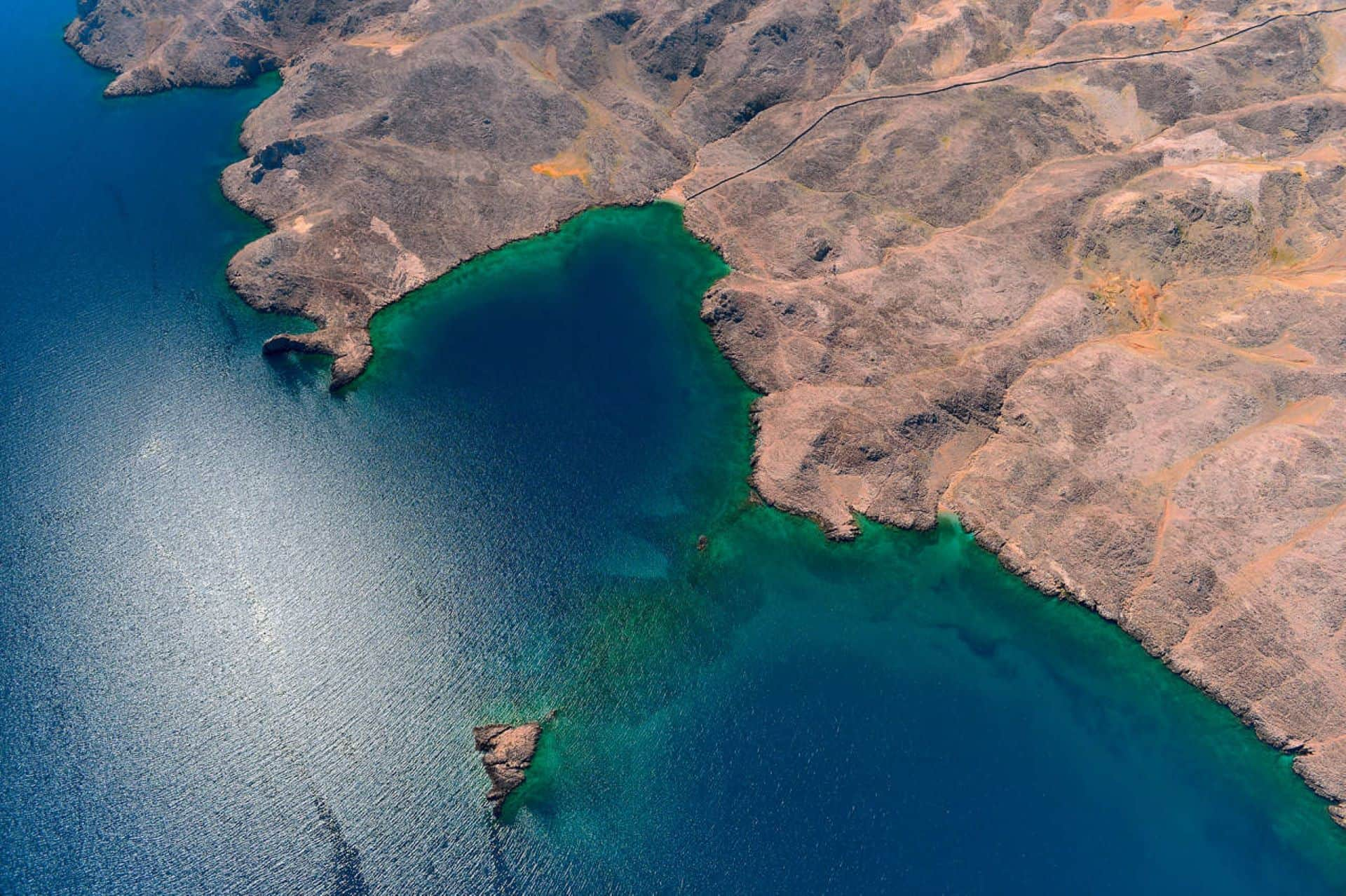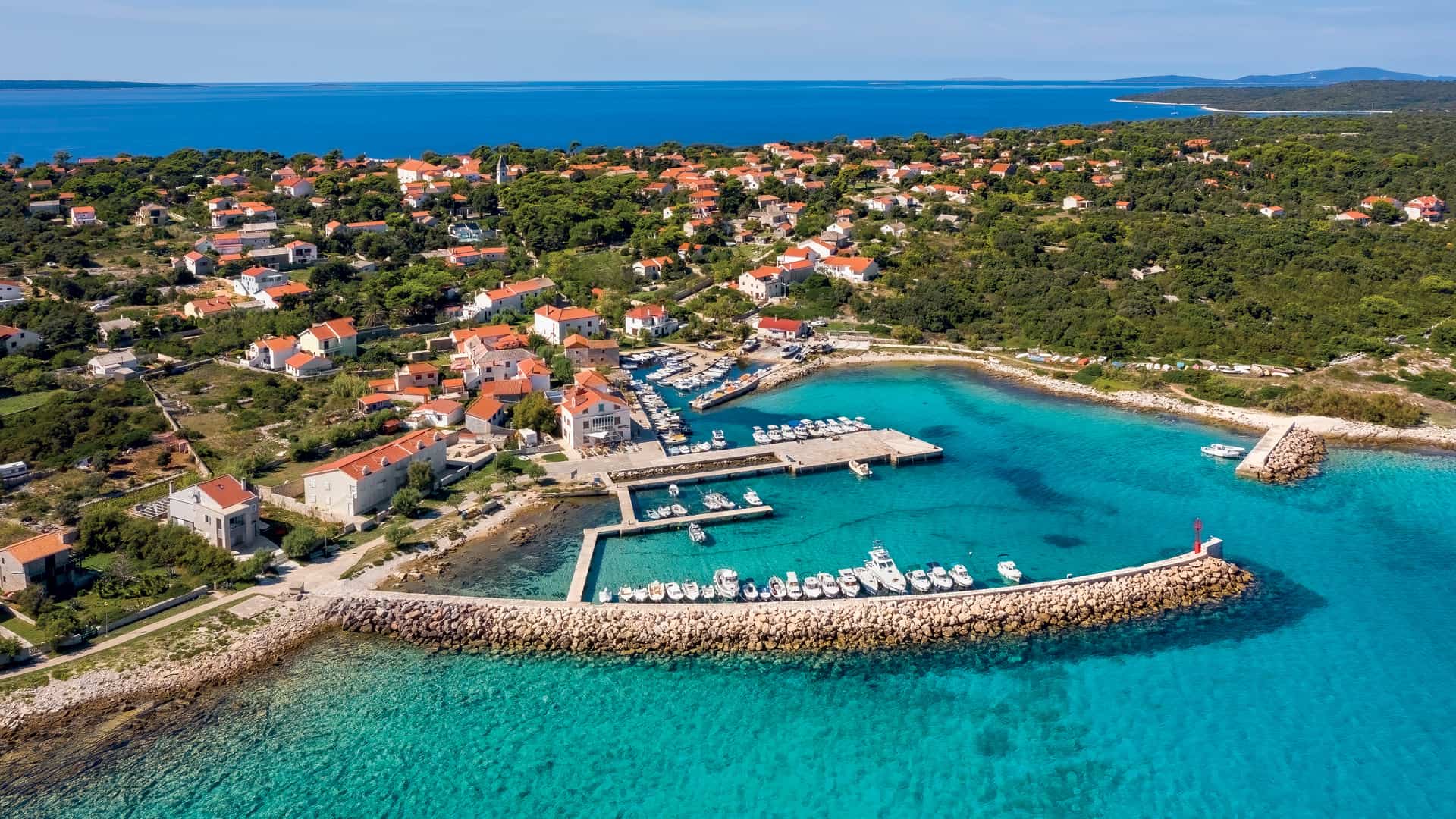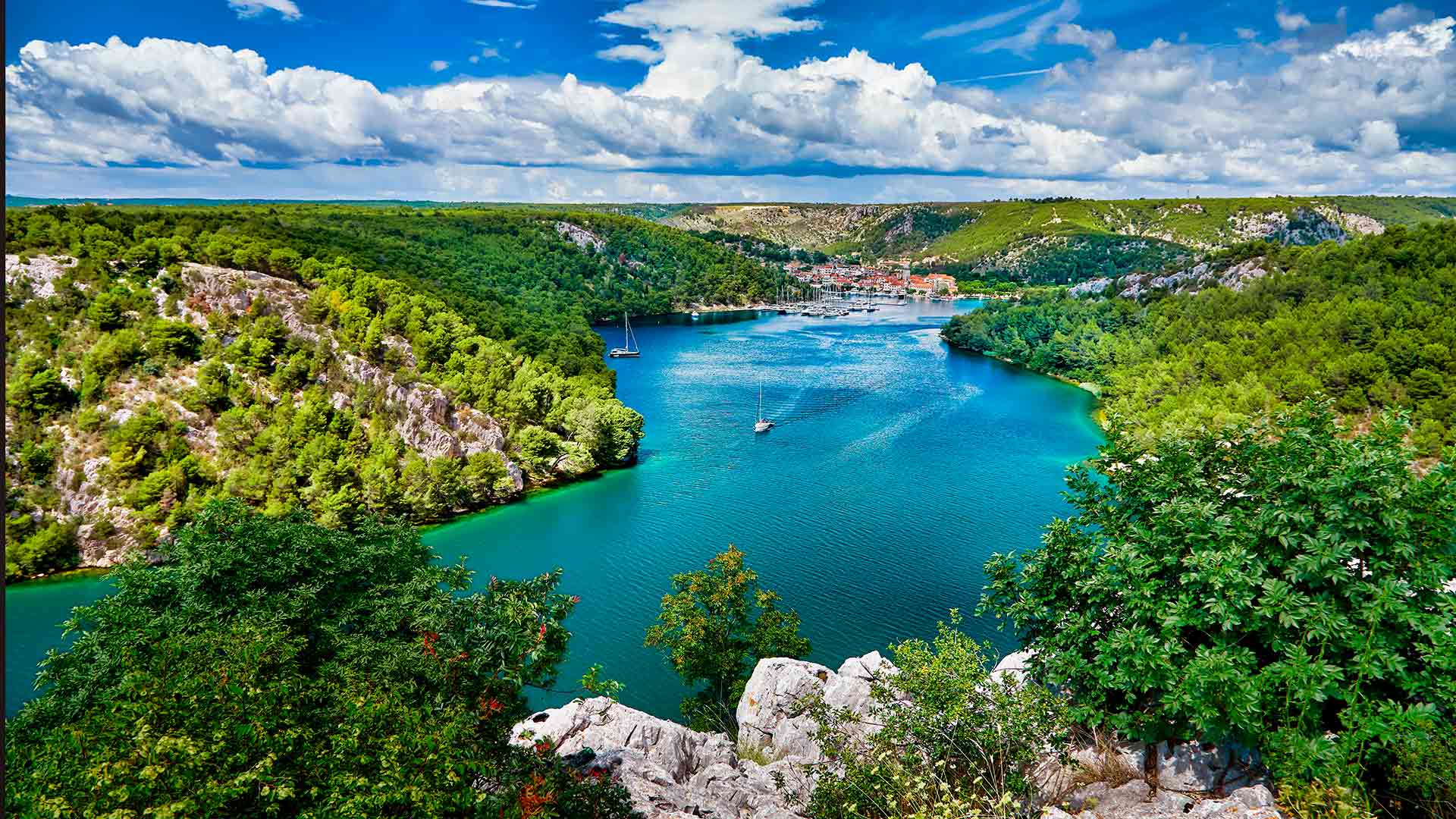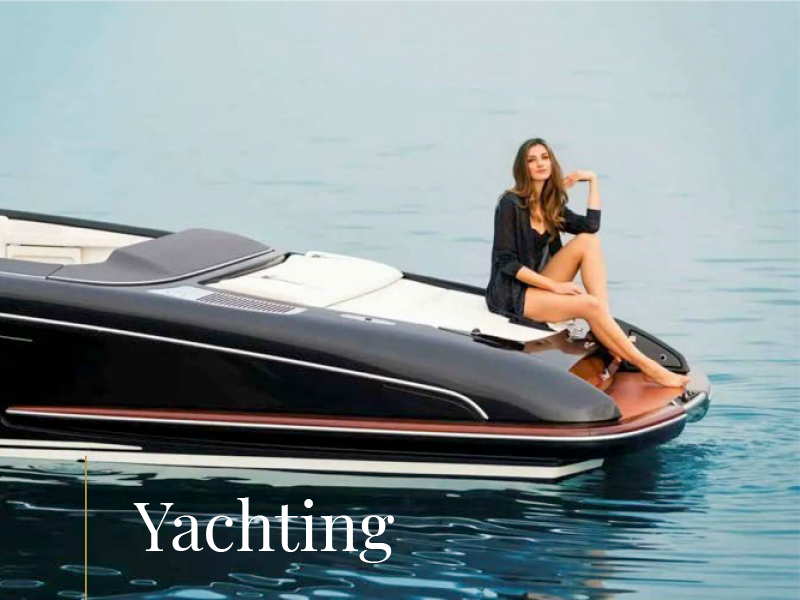Embrace the allure of Krk Island, a Croatian gem nestled in the heart of the Adriatic Sea. Discover a captivating blend of ancient history, untamed nature, and modern indulgences. Wander through medieval towns, hike through verdant hills, and bask on secluded beaches. Indulge in fresh seafood and delectable Žlahtina wine
Venturing Into the Enchanting Embrace of Krk Island
Welcome to the enchanting Island of Krk, a hidden gem nestled in the crystal-clear waters of the Northern Adriatic. With its rich history, stunning landscapes, and vibrant culture, Krk has emerged as a must-visit destination for travelers seeking a perfect blend of relaxation and adventure.
So, we take you on a tour through and around the island of Krk because you can also get there by car if your boat is moored in the southern marinas, and the idea of a beautiful spring weekend discovery of this island seems like an excellent idea to us.
Charter a Yacht and Discover Hidden Gems of Krk Island
Immerse yourself in the island’s splendor aboard a chartered luxury yacht, cruising along the rugged coastline and venturing into secluded coves where pristine beaches await. As you navigate the turquoise waters, let the gentle breeze caress your skin and the sun’s warmth invigorate your soul.
A Glimpse into History: Exploring Krk Island’s Rich Cultural Heritage
The adjective ‘golden’ has been associated with the island of Krk since Roman times, and it’s not surprising at all because how can you sum up in one word the incredible diversity of landscapes, natural phenomena, and history that permeates the rocky fabric of this island – from prehistoric times, through ancient times, to the development into a cultural capital of Glagolitic script with the Frankopan princes of Krk and today’s popular tourist destination where you can anchor in secluded coves, spend the night in a lighthouse, or in exclusive hotel facilities.
Transportation and getting around Krk Island
Even before you reach the island by road via the Krk Bridge, on the islet of Sv. Marko, the remains of a church and a Venetian fortress stand as silent evidence of how important this navigational route through Vinodol Channel has been throughout history. These maritime routes remain important today, but they are now used by sailors.
To explore the island of Krk, you can sail from the mainland, specifically from Marina Novi in Novi Vinodolski, or Mitan Marina a kilometer south, from where you can visit the favorite harbors of Vrbnik and Baška with their surrounding beaches.
A bit further north, within the Klimno Bay, you’ll find the place of the same name, offering about 40 berths and good protection from winds from all directions, as well as motor service and boat repair in a shipyard with a 130-year tradition.
Embark on a Day Trip by Boat
Soline and Čižići are very popular for day trips, and you can also anchor there, not only because of the large beach but also because of the therapeutic mud in Meline.
However, if you start from ACI Marina Ičići near Opatija, you’ll probably head towards Njivice because, in Omišalj, despite a marina with around 200 berths in the Pesja Bay, sailors mostly just keep their boats there, and visitors somehow tend to avoid it due to the oil terminal that wants to expand into an LNG terminal, which further discourages guests. Unfortunately.
Unearth the Treasures of Krk Town: A Historical Adventure Through Time
The main town of Krk, with fortified walls rising from the sea, seems like a litmus test for other places on the island, but it stands out in every aspect with its size and preservation. During our visit, extensive work on the city’s infrastructure was in full swing, but residents and especially tourist services are expecting a significant increase in visitors.
And rightfully so, because Krk, with its intertwined streets, towers, a bell tower, or the Cathedral of the Blessed Virgin Mary, as well as a new interpretative center of maritime heritage, deserves every minute of your time.
Looking at the map, the island of Krk is perfectly situated in the middle of the Kvarner region, with safe harbors and marinas of nearby islands Rab, Cres, Lošinj, Pag, as well as the ports of Opatija and Crikvenica within about 30 miles. Therefore, it’s not surprising that when it comes to sailors or boat owners, Marina Punat is the cradle of nautical tourism, growing into the best and largest marina in Kvarner since the 1960s.
Marina Punat: The Perfect Base for Exploring Krk Island
It’s interesting how among the yachts in the marina, over 70 percent are motorboats, whose owners have recognized the quality of service at Marina Punat. It’s the most awarded marina in the Adriatic and has held the Blue Flag continuously for 21 years.
The director of Marina Punat wisely manages the marina with attention to employees and, first and foremost, their guests. The modern appearance of the marina and the abundance of technological solutions found here are part of a clear vision for the future.
‘Our goal is to continue building a system. I think we are entering the era of technology, and we don’t want it to trap us. We want both ourselves and our guests to feel good and to make it easier for us to work and be more available to our guests. In that sense, I consider the use of technology good because it will be impossible to avoid it. We need to use the right things intelligently, and that’s where our future lies,’ explained Bernarda Renata Marević.
Today, the marina has around 850 berths in the sea and more than 500 dry berths, as well as a shipyard with three slips up to 600 tons, a dry marina with pontoons raised to the level of the boat, and other amenities, including various shops available to sailors.
Today, this is one of the most equipped marinas, and a cycle of investments is just concluding, from the arrangement of a completely new part of the marina with the most modern sanitary facilities to the Kanajt residential area with 22 rooms where sailors and ‘ordinary’ guests can rest. Their SPA center is also popular among marina guests.
In collaboration with Marina Cloud, a sensor system for the preventive protection of boats called Sense4Boat has been developed, which informs the yacht owner about all data related to their vessel in real-time. Through a mobile application, you can also have access to photos of your yacht, which the marina staff stores in the system once a week.
The system uses state-of-the-art self-powered and autonomous sensors that are installed on the boat, with very simple installation. These sensors provide insight into the bilge pump’s condition on the boat, detect smoke and increased temperatures, and continuously monitor the battery status.
Connected to surveillance posts with video surveillance, this advanced technology is linked to a central computer, providing all the data about the boat and the berth it is on. The best part is that contracted boats are entitled to free sensors. Therefore, it’s not surprising that more than 1300 owners have entrusted their boats to Marina Punat, with nearly 90 percent remaining loyal to the marina for decades. The main markets are Germany, Austria, and Slovenia, so it’s not surprising that there are about 150 charter boats connected to the marina.
Košljun: Uncover the Island’s Benedictine Monastery and Fortified Church
Arriving at Marina Punat in February also has its advantages, so we made the most of the marina’s hospitality and sailed by boat to Košljun, a tiny islet isolated like the pupil of an eye in the Puntarski Bay. It was chosen by Franciscans as their home for contemplation and work.
It’s incredible when you are alone on such an islet; it’s easy to feel the call of meditation and wish to stay.
A walk through the cloister, a small ethnological and natural history collection, and a large collection of books and incunabula are a journey through the centuries of this microcosm and a must-visit stop, which you can also reach by kayaking from the marina since the depths around the islet are not suitable for boats that draw more than a meter and a half.
If, by any chance, you’re bothered by the hustle and bustle in the marina, you can moor inside Puntarska Draga or in the small harbor of Dunat, where there are moorings available. Common nautical routes head southeast of the island of Krk, and along the route, you’ll come across unreal sandy beaches squeezed between rocks, quite secluded except during the season.
After Stara Baška, you’ll find the Surbova beach, followed by the beautiful anchorage of Bracol, Vela Draga, and then the beaches Škuljica and Škrinjica, perfect for exploring by kayak, leading to Vela beach near Baška.
Baška: Discover the Secrets of the Baška Tablet
The fortified castle of Baška, where the Krk princes resided, is now just a ruin, which the inhabitants abandoned in the late 14th century despite the fertile land of Bašćanska Dolina and the only permanent watercourse on the Adriatic islands. They settled in Baška by the sea instead.
The nearly two-kilometer-long semicircular sandy crescent that forms Bašćanski Bay is most beautiful when viewed from a nearby hill with the church of St. John, offering a magnificent view of the bay and the island of Prvić (protected aquatorium), as well as the coast with the mighty Velebit as a dramatic backdrop.
Although unproven, but certainly open to imagination, is the possibility that it was precisely because of such beauty that the oldest written monument of Croats from the 12th century, written in Glagolitic script – the Baška Tablet, originated here.
What is certain is that at the beginning of the 20th century, thanks to Emil Geistlich, Baška opened its beauty to tourists by opening the first hotel and bathing resort. Today, culture and tourism are intertwined, so from the town itself, you can start cycling or hiking tours of up to 90 km, climb nearby climbing sites, or even learn Glagolitic letters on a trail with 35 letter-shaped sculptures.
Off the Beaten Path: Uncovering Hidden Gems on Krk Island
Another attraction in Baška – the Path to the Moon will take you to beautiful viewpoints, as well as to the Diviška pool, and numerous pastures with dry stone walls and horses are part of the magnificent landscape and a beautiful environment for hiking and exploring. The small harbor is located further north and is almost connected to Vela.
From Mali Port all the way to Cape Glavine south of Vrbnik is the Kuntrep ornithological reserve, so anchoring of all types of vessels is prohibited within 200 meters of coastal nests, feeding areas, and resting places of eagles to avoid disturbing them.
Vrbnik: A Hilltop Gem with a Rich History
Impressive cliffs, rising about fifty meters above the sea, on which the fortified town of Vrbnik stands, are a beautiful and unusual sight when approaching from the sea. This fortified town with a labyrinth of narrow streets that are a thousand years old is very attractive, but what Vrbnik is most famous for can already be found on the waterfront, in the unpretentious but pleasant cellar of the Vrbnik Cooperative, the temple of Žlahtina, the golden variety that is autochthonous here and the only true home of this white grape variety.
Wine Lovers’ Paradise: Uncork the Flavors of Krk Island’s Renowned Žlahtina
You can moor at the pier, and Nuluk and Pod Kovač are small city beaches for refreshment before the Žlahtina tasting. Moving south, you’ll find the beaches Zgribnica, Kozica, and Potovošće.
Marinko Vladić, a longtime director, is an oenologist who has been steering the Vrbnik Cooperative for a quarter of a century and is the man who first came up with the idea of sinking champagne into the sea. He created Valomet, a champagne aged and covered with marine flora, and many winemakers quickly embraced the technique of ‘submerging’ cages. Marinko is proudest of Zlatna žlahtina, which, in addition to the well-known aroma and Protected Designation of Origin (PDO), can also be tasted aged in oak barrels as Grand Cru, with a more lavish bouquet. It’s a perfect match for more serious grilled fish or domestic lamb.
The cellar on the waterfront will soon be exclusively dedicated to tourists because the operation of this cooperative with investments of around 17 million kuna, along with a new facility, can only mean even more satisfied Žlahtina lovers. You can taste this autochthonous white variety in the town at the wine house of Ivan Katunar, Šipun winery, and several other family wineries or Konoba Nada.
A hotel dedicated to this variety, namely the Vinotel Gospoja, is a modern and luxurious accommodation worthy of the reputation of Žlahtina. In addition to an incredible sea view, the interior features a total wine design, so each floor is filled with names and associations with wine varieties. Along with wellness and a top-notch restaurant, tasting Wine Gospoja is a perfect scenario for an unforgettable evening in this ancient town.
A visit to the old Vrbnik house will reveal what life was like in the Middle Ages when Vrbnik, under the Frankopan princes, was known as a cultural center and where the Vrbnik Statute from 1388, written in Glagolitic script, originated. Glagolitic missals and incunabula in the Croatian language were printed until 1893 when the last Glagolitic missal was published.
A Culinary Delight: Indulge in Krk Island’s Gastronomic Gems
On leaving Krk, we stop in Njivice, and although there aren’t many berths on the operational waterfront, you can moor freely if you’re a fan of true gastronomy. In the Rivica restaurant, owned by our host from the beginning of the text, you don’t have to target the season because the restaurant operates year-round and is based on local and seasonal ingredients, with pleasant conversation being an integral part of the menu.
‘We combine domestic tradition, Italian cuisine, and Viennese influences in the restaurant, so I dare say we dabble in fusion cuisine and don’t shy away from modern culinary techniques. On the other hand, we strive to make the ingredients as original as possible, especially when it comes to seafood. Our Kvarner scampi, as well as white fish, cuttlefish, and lobsters, are all presented through several dishes, but the main one is carpaccio or, in the old days, ‘under lemon,’ and this dish is rightly called ‘Sea Passions,’ Dražen proudly explains.
As we listen to Dražen, plates of scampi ‘under lemon’ arrive at the table, seasoned with orange emulsion and garnished with finely chopped apple, followed by a plate with Rivica’s signature dish: scampi with homemade maneštra (a traditional dish), then squid on the port with homemade broskva (a type of pasta), which, for a light dinner in the middle of February, means true pleasure complemented by lemon and pistachio mousse and a panna cotta and chocolate cake.
Charter a Catamaran and Experience Unparalleled Freedom
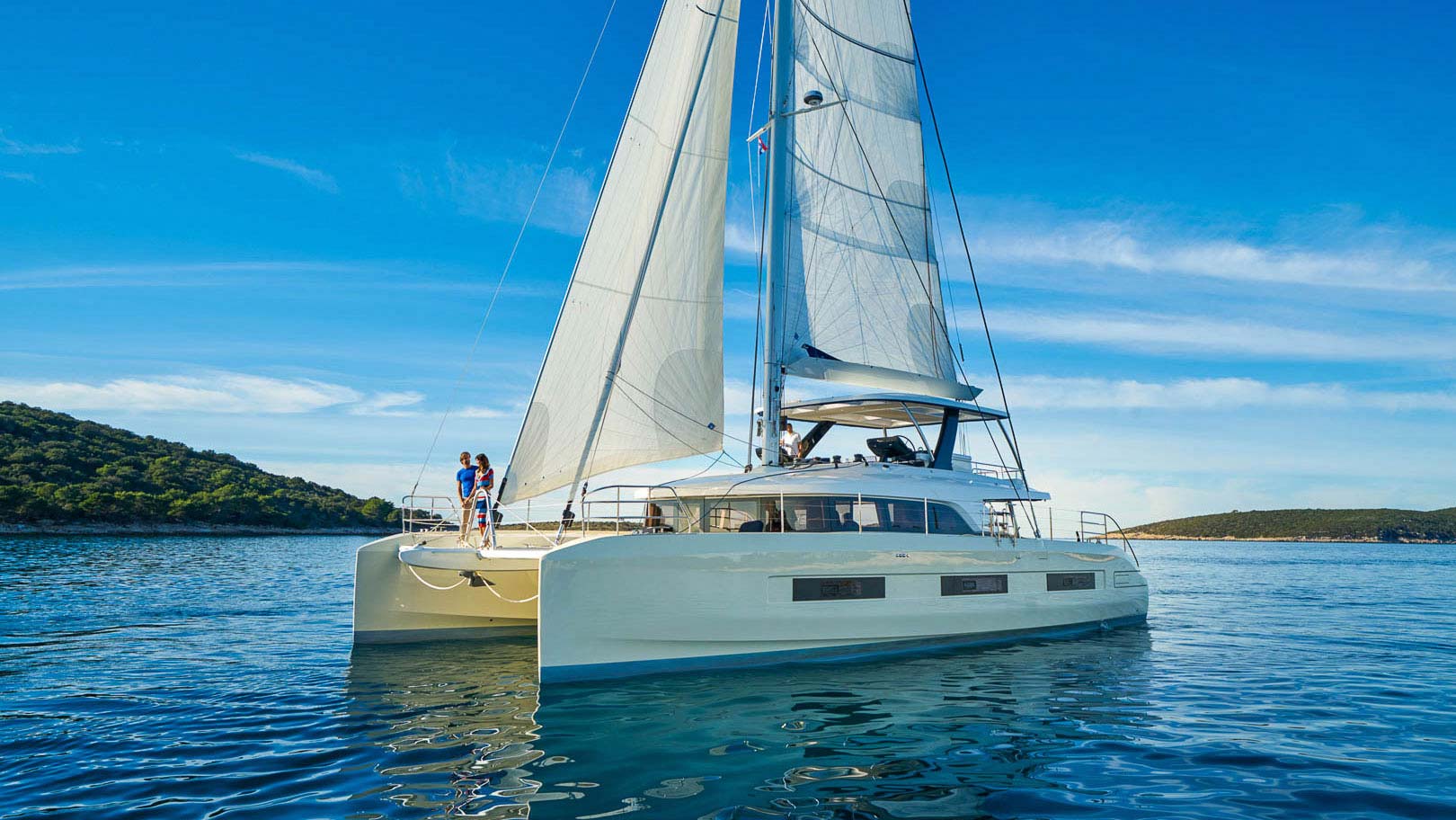
Amada Mia
Lagoon Sixty5 ‘Amada Mia’ is one of the most admirable luxury sailing catamaran available for charter on Adriatic coast, Croatia.
Dražen is aware that Njivice is an incidental destination for sailors because the habit is to sail from Punat and turn left to Lošinj-Unije and beyond, so Njivice are in the sights of sailors in the pre-season and post-season. ‘We are recognized by many for our homemade pasta, and the dish is always made ‘al momento,’ and everyone recognizes it right away, so they always come back to us,’ Dražen proudly says.
They are especially careful with oils and the wine list, as evidenced by the glass wine cellar inside the restaurant, which has not only enriched the space but also hides carefully selected wines from all over Croatia, and famous Croatian winemakers often visit here for ‘Ćakule s vinom’ (wine talks).
So, isn’t it fair and right to weave and complete the story about the golden island of Krk through gastronomy, through turquoise shores and hidden beaches, beautiful anchorages, fortified towns, and golden Žlahtina? Of course it is, so set sail for the island of Krk on the first free day…
Text Filip Bubalo
Photos Filip Bubalo, Ivo Pervan, Boris Kačan, Mario Romulić, Dejan Hren, Ivo Biočina/HTZ, TZ otoka Krka & TZ Baška
Video Yachts Croatia


